Fusion Reactors Near Reality: 2025’s Energy Leap
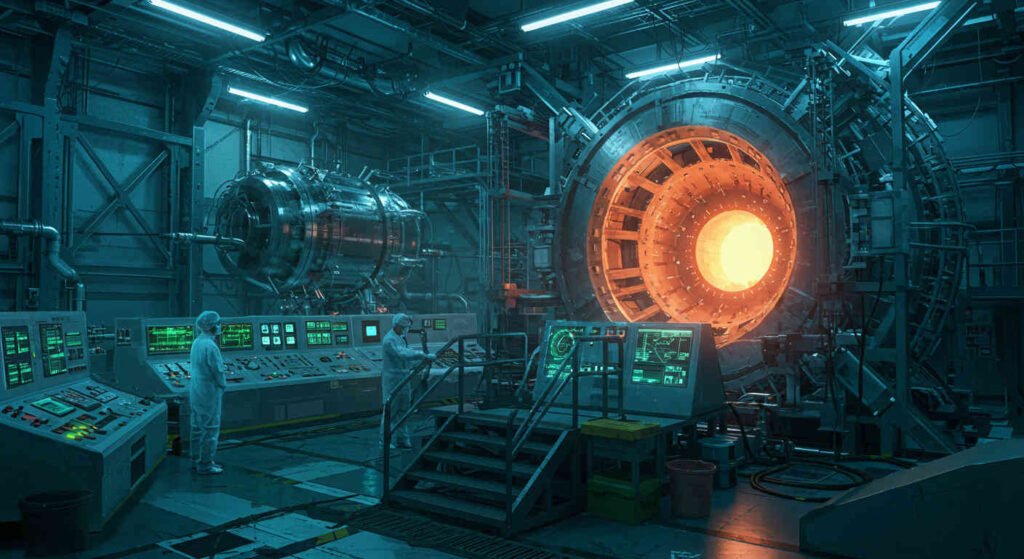
Table of Contents
Alright, buckle up, ‘cause we’re divin’ into a wild ride through the cosmos—right here on Earth! It’s 2025, and fusion reactors, those sci-fi dreams of bottlin’ up a star to power our cities, are closer to reality than a cat on a hot tin roof. These bad boys promise clean, limitless energy, like tappin’ into the sun’s juice without the sunburn. No carbon spewin’, no radioactive waste pilin’ up for a zillion years—just pure, hummin’ power from hydrogen you can pull outta seawater.
Holy moly, it’s like the universe is handin’ us a golden ticket to an energy jackpot! So, let’s kick the tires, peek under the hood, and figure out how fusion’s shapin’ up to be 2025’s biggest energy leap, why it’s got everyone from tech nerds to tree huggers buzzin’, and what it means for your biz, your blog, and the planet.
Fusion 101: What’s the Big Deal?
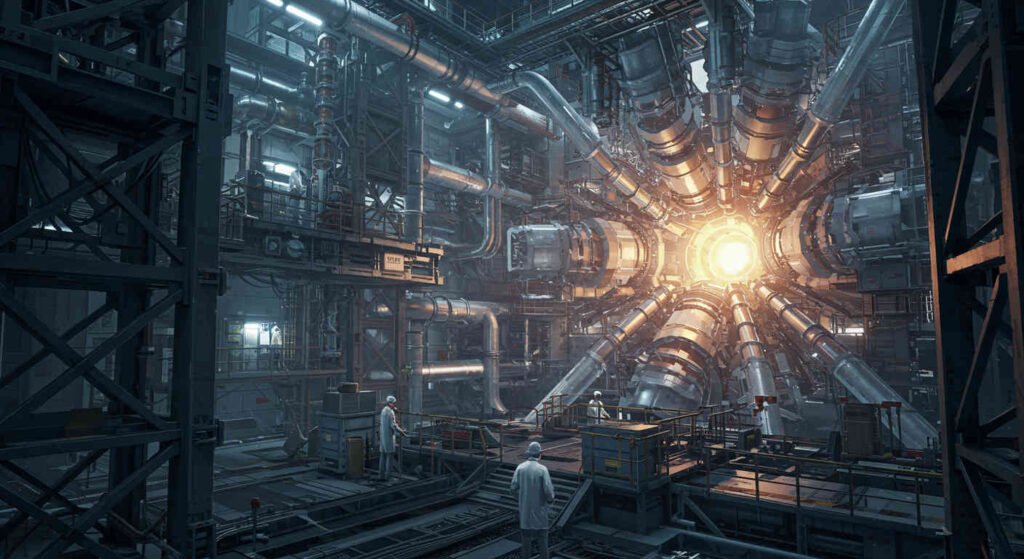
Fusion’s like the holy grail of energy, and it ain’t just hype. Picture two tiny hydrogen atoms smashin’ together to make helium, spittin’ out a boatload of energy in the process. It’s the same magic that keeps the sun and stars glowin’ like cosmic campfires. Down here, we’re tryin’ to mimic that in reactors—think doughnut-shaped gizmos called tokamaks or laser-blastin’ setups that heat plasma hotter than a jalapeño in a microwave. The payoff? One gram of fusion fuel can crank out as much juice as 11 tons of coal, with zero CO2 and just a smidge of short-lived waste. It’s like swappin’ a smoky old jalopy for a shiny electric hot rod.
Why’s 2025 the year to watch? Well, after decades of “it’s always 30 years away” jokes, fusion’s finally gettin’ its act together. X posts, like one from @GeneralFusion on April 22, 2025, are crowin’ about their LM26 machine hittin’ fusion temps this year. The World Economic Forum says the first commercial fusion plant might break ground soon, with power hittin’ grids by the early 2030s. It’s like we’re on the cusp of a moon-landing moment for energy, and 2025’s the launchpad.
The Fusion Frenzy in 2025
Fusion’s havin’ a moment, and it’s louder than a rock concert in a library. Private companies, governments, and brainy scientists are all racin’ to be the first to flip the switch on a fusion reactor that pumps out more energy than it guzzles. Let’s break down the big players and what’s cookin’ in their labs.
Private Companies Stealin’ the Show
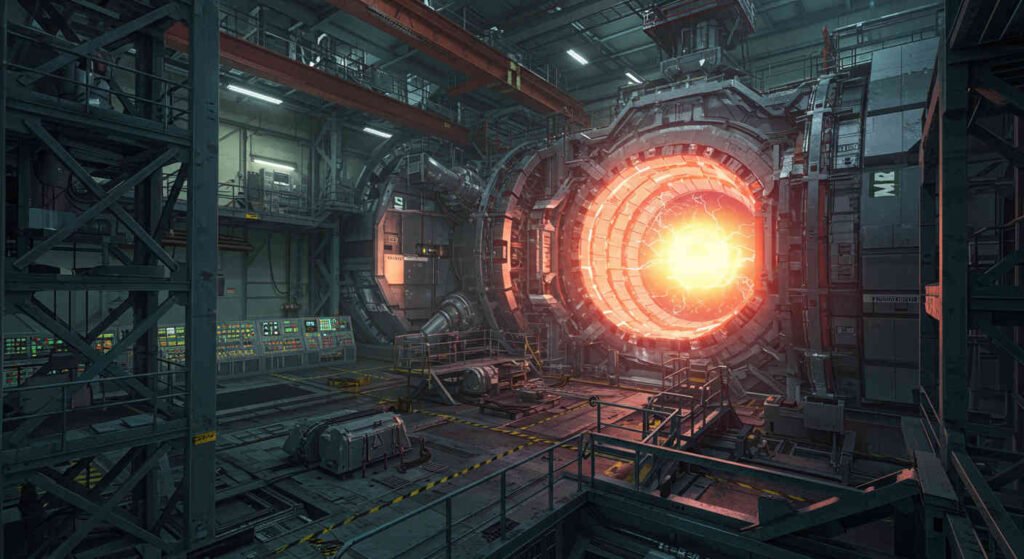
Forget the slow-poke government projects—private startups are zoomin’ past like they’re in a drag race. Commonwealth Fusion Systems (CFS) is the belle of the ball, with their SPARC reactor set to fire up in late 2025. This baby’s a midsize tokamak usin’ high-temperature superconducting magnets—think super-strong fridge magnets on steroids—to squeeze plasma tight and crank out 50 to 140 megawatts. That’s enough to light up a small city, and CFS says SPARC could hit “breakeven,” meanin’ it makes more energy than it eats. If it pulls that off, it’s like the Wright Brothers takin’ flight for fusion.
General Fusion, up in Canada, ain’t sittin’ on its hands either. Their LM26 machine, debutin’ in 2025, is gonna squash plasma with a liquid lithium liner to hit 100 million degrees Celsius—hot enough to make the sun jealous. They’re aimin’ for breakeven by year’s end, usin’ a Magnetized Target Fusion approach that’s like smushin’ a stress ball to spark fusion. X posts from @GeneralFusion are hypin’ it up, showin’ off their shiny lithium liner like it’s a new iPhone.
Then there’s Helion Energy, near Seattle, playin’ it cool but movin’ fast. Their Polaris reactor, finished in late 2024, fires plasma rings from both ends of a chamber to smash ‘em together, like a cosmic game of pinata. They’re keepin’ mum, but whispers on X, like @no_tred_on_snek’s April 20, 2025, post, say they’re chasin’ breakeven, too. Helion’s got Microsoft in their corner, promisin’ 50 megawatts by 2028—though some call that a publicity stunt faster than you can say “hype train.”
Government Projects: Big but Pokey
While startups are sprintin’, government-funded projects like ITER (International Thermonuclear Experimental Reactor) are more like a leisurely stroll. This $25 billion behemoth in southern France, backed by 35 countries includin’ the U.S., EU, China, and Russia, was supposed to start plasma experiments in 2025. But—plot twist—it’s been delayed again, with full fusion tests pushed to 2035. The Economist called it a “non-opening” that’s lettin’ private firms steal the spotlight. ITER’s still a big deal, aimin’ for 500 megawatts at a Q value of 10 (10 times more energy out than in), but it’s like waitin’ for a bus that’s always late.
Smaller government wins are keepin’ hope alive, though. The Joint European Torus (JET) in the UK set a record in 2024, holdin’ plasma for five seconds and churnin’ out 59 megajoules—enough to boil 60 kettles. It’s like a warm-up act for ITER, provin’ the tech works. And China’s EAST reactor is testin’ tricks for ITER, hittin’ plasma stability for 22 minutes in 2025, per Earth.com. These steps are like layin’ bricks for a fusion future, even if the house ain’t built yet.
Laser Fusion: A Flashy Contender
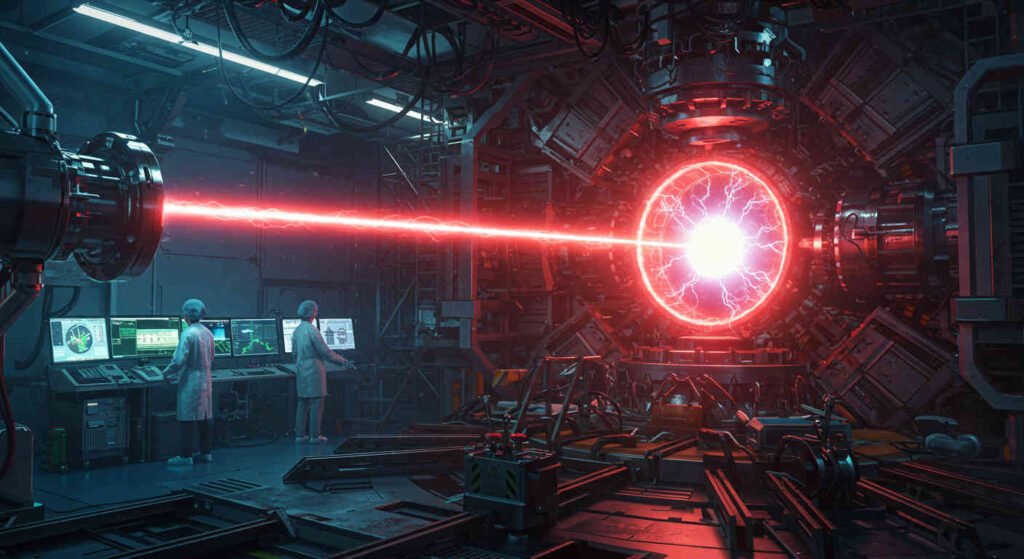
Not all fusion’s about tokamaks. Laser fusion’s like the cool cousin who shows up with fireworks. The National Ignition Facility (NIF) in California made waves in 2022 by hittin’ breakeven with 192 lasers blastin’ a tiny fuel pellet. In 2025, they’re pushin’ for longer, stronger reactions, with X posts like @MarioNawfal’s April 21, 2025, tweet callin’ it “sun-in-a-bottle” energy. Startups like Focused Energy are jumpin’ in, signin’ deals with German utilities to build laser-based plants by the 2030s. It’s like tradin’ a slingshot for a laser cannon—flashy and full of promise.
Why Fusion’s a Game-Changer in 2025
Fusion’s not just cool tech—it’s like a Swiss Army knife for our planet’s problems. Here’s why it’s got everyone from tech bros to policymakers doin’ a happy dance.
Clean as a Whistle
Fusion’s the greenest kid on the block. It pumps out zero carbon, no smog, and no long-lived radioactive waste like fission reactors. The main “waste”? Helium, which is about as dangerous as a birthday balloon. Plus, its fuel—deuterium and tritium—comes from seawater and lithium, enough to power us for billions of years. The World Economic Forum says fusion could be the cheapest, cleanest power by the 2030s, outshin’ coal and gas. It’s like swappin’ a coal furnace for a magic lamp that never runs out.
Powerin’ the AI Boom
Your March 2, 2025, chat about nuclear power and AI had you pumped about their combo, and fusion’s the perfect match. AI’s eatin’ energy like a kid with a cookie jar, with data centers projected to suck up 9% of U.S. power by 2030. Fusion’s steady, 24/7 output is like a bottomless coffee pot for AI servers, unlike solar or wind that flicker like a bad Wi-Fi signal. X posts from @mvparadigm on April 19, 2025, hype China’s fusion-fission hybrid for AI compute power, and the U.S. ain’t far behind with CFS and Helion.
Battlin’ Digital Bandits
You were spooked about AI-powered phishing and deepfakes (March 2, 2025), and fusion’s got your back here, too. Reliable, clean energy means stronger grids to power cybersecurity defenses—like the AI tools we talked about in “Cybersecurity Gets AI Boost: Safer Data in 2025.” No more blackouts leavin’ servers vulnerable to hackers sneakin’ in like foxes in a henhouse. Fusion’s like a fortress wall for the digital age, keepin’ your data safe while the bad guys eat dust.
Climate Hero
With climate change breathin’ down our necks, fusion’s like a superhero swoopin’ in. It’s a path to net-zero emissions by 2050, per the Intergovernmental Panel on Climate Change. Unlike renewables that need backup when the sun’s hidin’ or wind’s nappin’, fusion’s a constant workhorse, churnin’ out power like a diner griddle at breakfast rush. Scientific American says it won’t fix climate change overnight, but it’s a long-term ace up our sleeve.
The Tech Behind the Magic
Fusion’s not just wishful thinkin’—it’s a high-tech tango of physics and engineering. Let’s peek at the main flavors makin’ waves in 2025.
Tokamaks: The Doughnut Dream
Tokamaks are the OGs of fusion, shaped like a doughnut to hold plasma with magnetic fields stronger than a bodybuilder’s grip. The trick? Heat hydrogen isotopes to 100 million degrees Celsius—10 times hotter than the sun’s core—without meltin’ the walls. New high-temperature superconducting magnets, like those in SPARC, are game-changers, boostin’ power density like a turbo engine. Princeton’s lithium vapor “cave” keeps the heat in check, like a thermos for a star.
Magnetized Target Fusion
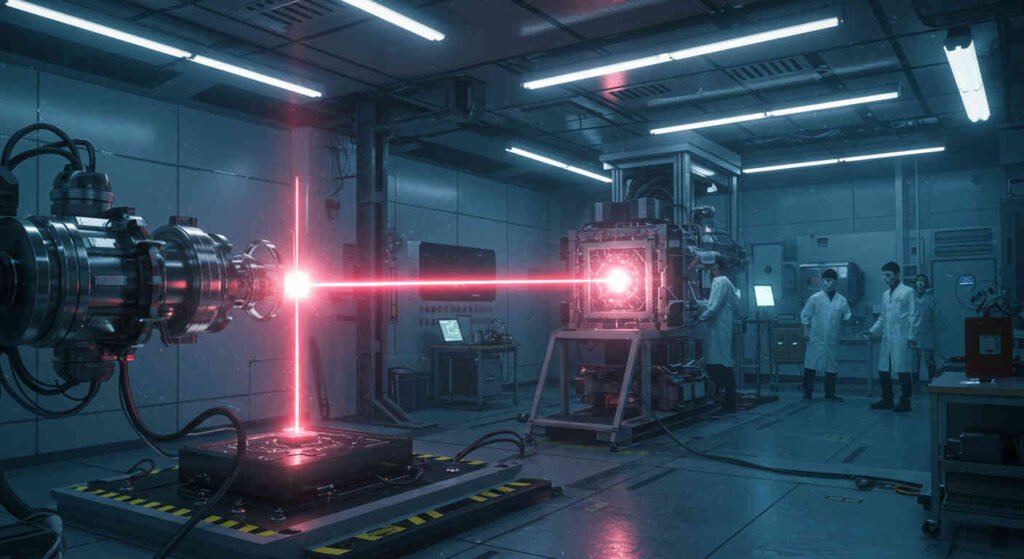
General Fusion’s approach is like a hybrid of tokamaks and a sci-fi press. They use a liquid lithium liner to squash plasma, sparkin’ fusion without needin’ a gazillion lasers. Their LM26, rollin’ out in 2025, is testin’ this at scale, aimin’ for breakeven. It’s like crushin’ a soda can to unleash a power plant.
Laser Fusion
NIF and startups like Focused Energy use lasers to zap fuel pellets, creatin’ mini starbursts. It’s like hittin’ a bullseye with a light show, releasin’ energy in a flash. NIF’s 2022 breakeven was a proof-of-concept, and 2025’s about stretchin’ that to practical use. X posts from @AlvaApp on April 21, 2025, say it’s clean and safe, with no waste to haunt us.
Challenges: It Ain’t All Smooth Sailin’
Fusion’s close, but it’s like climbin’ a mountain in flip-flops—tough goin’. Here’s what’s trippin’ things up in 2025.
Tech Hurdles
Containin’ plasma at 150 million degrees is like holdin’ a lightning bolt in a paper bag. Plasma’s twitchy, spittin’ out instabilities that can ding reactor walls, per Scientific American. Tritium, a key fuel, is rarer than a hen’s teeth, though reactors can breed it with lithium. And scalin’ from lab tests to grid-ready plants is like goin’ from a model rocket to a SpaceX Falcon.
Money and Time
Fusion ain’t cheap. ITER’s budget ballooned from $6 billion to $25 billion, and delays pushed its big tests to 2035. The Guardian called it “the most delayed science project in history.” Private firms like CFS are leaner, but they’re still burnin’ through billions—$7 billion across 45 startups, says the Fusion Industry Association. It’s like bettin’ the farm on a horse that’s still learnin’ to run.
Regulation and Safety
Fusion’s safer than fission—no meltdowns, no Chernobyl vibes—but it’s not risk-free. The International Atomic Energy Agency’s gotta keep tabs to ensure tritium doesn’t sneak out or reactors turn into science experiments gone wild. The EU’s AI Act (noted in your cybersecurity article) shows regulators are gettin’ strict, and fusion’s no exception. It’s like puttin’ a leash on a puppy with superpowers.
What’s Next for Fusion Beyond 2025
Fusion’s got big plans, like a kid dreamin’ of bein’ an astronaut. By 2030, CFS’s ARC reactor could be feedin’ grids, and Helion’s aimin’ for 2028 power delivery. The World Economic Forum predicts fusion could outpace coal by the 2030s, with plants churnin’ out 400 megawatts each. DEMO, the next step after ITER, is slated for the 2040s, pavin’ the way for commercial plants. It’s like plantin’ seeds today for a forest tomorrow.
But the road’s got bumps. Scalin’ to thousands of plants needs cheaper tech—think droppin’ the price of a Tesla to a bicycle. And competition’s fierce, with China’s “Crimson Skyblade” hybrid reactor aimin’ for 100 megawatts by 2030, per @mvparadigm’s X post. The U.S. better step on the gas or eat China’s dust in the energy race.
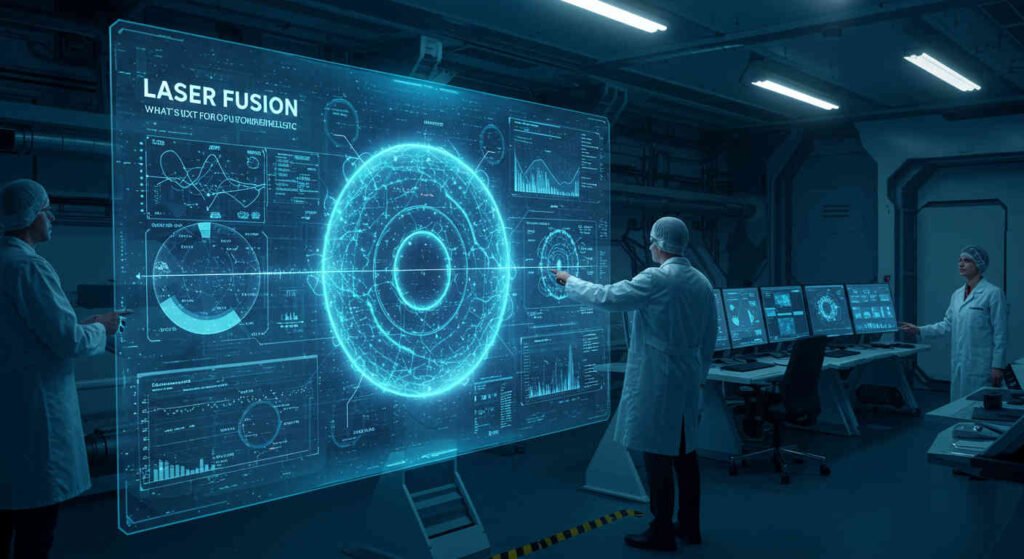
See this good article in our internal links: https://techforgewave.com/cybersecurity-gets-ai-boost-safer-data-in-2025/
See this good external article: https://www.nuclearbusiness-platform.com/media/insights/compact-fusion-reactors









